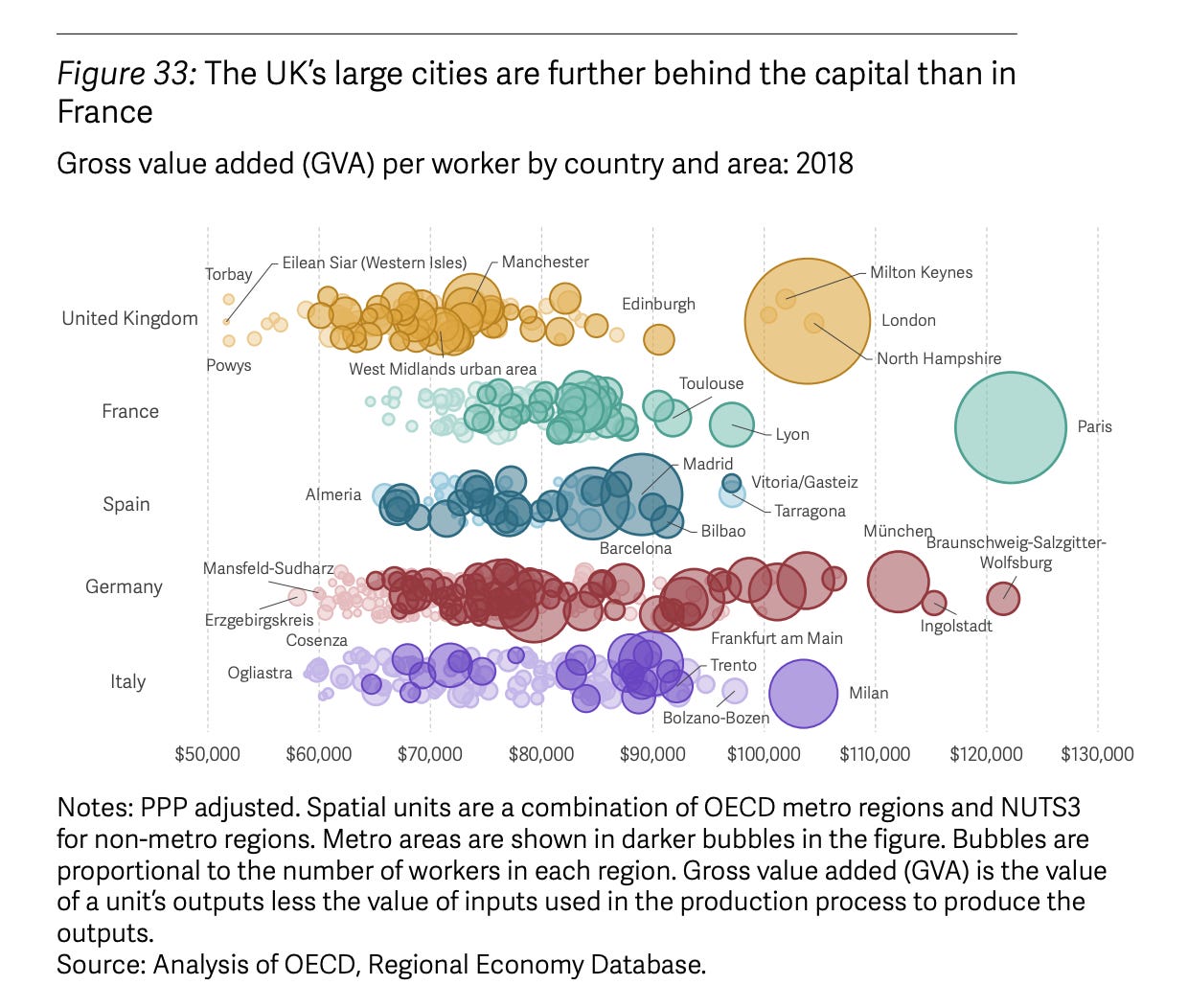6 Europe
Tooze

Tooze (2023) Chartbook 252 Broken Britain
6.1 Innovation
Smith
If Europe does decide to protect its car industry, what might it do? Tariffs on Chinese-made cars are one option, of course, but they come with several obvious limitation. First of all, their impact will be limited by exchange rate adjustment; the yuan will simply depreciate against the euro to at least partially offset the tariffs. Also, tariffs don’t do much to help European carmakers become more competitive in the export markets they used to dominate. The fact is that Chinese-made EVs are mostly just better than European-made ones right now, and tariffs aren’t going to change that.
In order to address these issues, Europe would need more than tariffs. It would need an equivalent of the U.S.’ Inflation Reduction Act — a major program of production subsidies, not just for EVs themselves but for the batteries and the mineral processing facilities necessary to make them. Europe would also need to simplify and slash some of the overgrowth of regulation that it has piled up around the auto industry over the last few years. And it would need to subsidize R&D in the EV sector more heavily.
And another important step would be something Europe has shied away from doing in recent times: encouraging startups. It’s no coincidence that Tesla, a startup automaker, was able to run rings around the stodgy old giants of GM and Ford, with their deep reliance on legacy markets and legacy technology. Europe has no Tesla; if it really wants to compete with China, it needs at least one.
In other words, if Europe is going to save its car industry, it’s going to have to finally leave the comfortable stasis it has slipped into over the last few decades. That stasis, driven by regulation and complacency, was never really sustainable; as soon as old tentpole industries like auto manufacturing were hit by external shocks, the whole system was inevitably going to creak and crumble.
Europe lucked out for a long time — the internal combustion engine maintained its dominance, and Chinese demand hungrily hoovered up German-made cars. But the shock came, in the form of the shift to EVs, and now the long, easy daydream is over. Europe’s leaders can choose to meet the challenge, or they can hold more meetings and issue more empty rhetoric. Incidentally, that’s the same choice that’s facing them on a great many fronts right now.